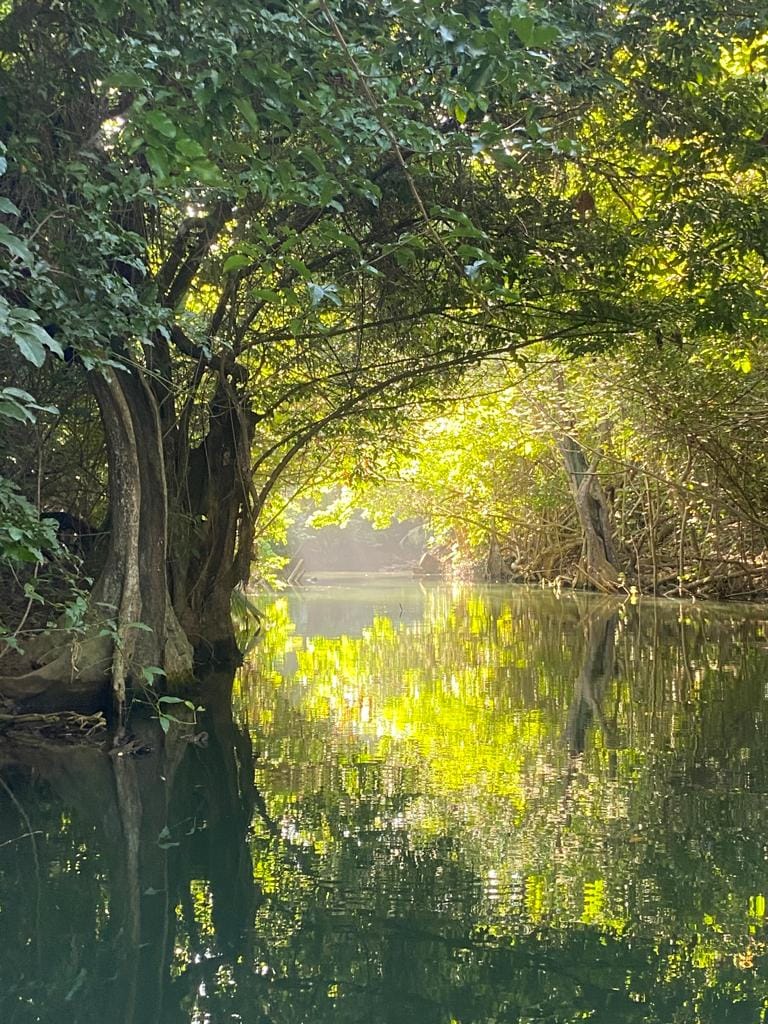Imagine for a moment being transported from hot, dry, dusty and barren islands to lush verdant islands gushing with waterfalls. Imagine the luxury of seeing landscapes thick with green jungle and colourful flowers, of hearing bird song, of breathing air purified by the trees, and of feeling the coolness of abundant clear fresh water, after seeing desolate plains with little life, breathing hot dry dusty air, and wilting in the heat.
This is the contrast between the islands of the West African coast (some of the Canary Islands and Capo Verdes) and those of the Eastern Caribbean. Nowhere was this contrast so acute as in Dominica. What a paradise!
Dominica lies about half way in the chain of East Caribbean islands, sandwiched between the two French “departments” of Martinique and Guadelope. The high mountains, lush jungle, and diverse wildlife make it a haven for those who relish in nature. While it might have a wonderful landscape for naturalists, it does not have good harbours and anchorages for sailors. The leeward west coast has few bays and seems to be exposed to an ever-present swell regardless of the wind direction. However, enduring somewhat rolly anchorages was absolutely worth being able to spend time here enjoying not only the environment but also the relaxed friendly people.
We started in the south basing ourselves in the capital, Roseau, for a week or so. The average annual rainfall in the mountains on the Atlantic side of the island is measured in metres – it can be up to 9 metres! Not surprisingly Dominica has something like 18 waterfalls, with many more during the rainy season. We visited two of these waterfalls, both of which had something different to offer. Middleham Falls at 60 metres is one of the highest on the island and access to them takes the visitor on a 90-minute walk through some beautiful rainforest, up and down many stairs. A final scramble over some rocks leads to a swimmable pool at the bottom of the falls. I am assured that the water is quite cold (I opted not to do the scramble), and it took most of the walk back for Phil’s fingers to thaw out.
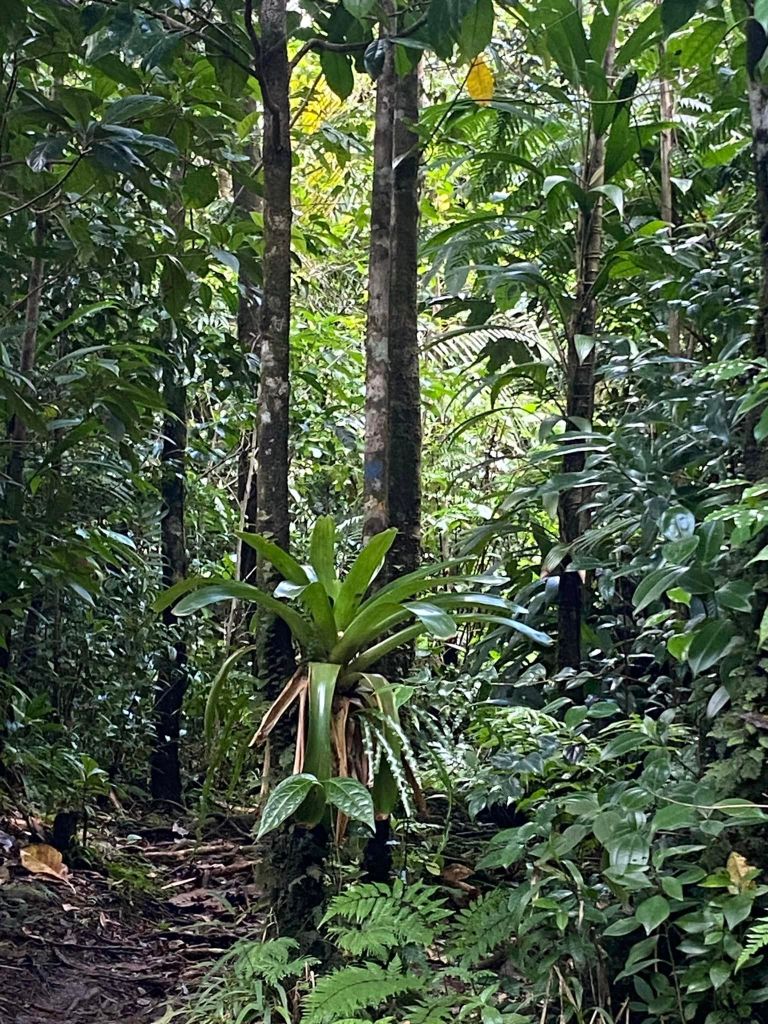
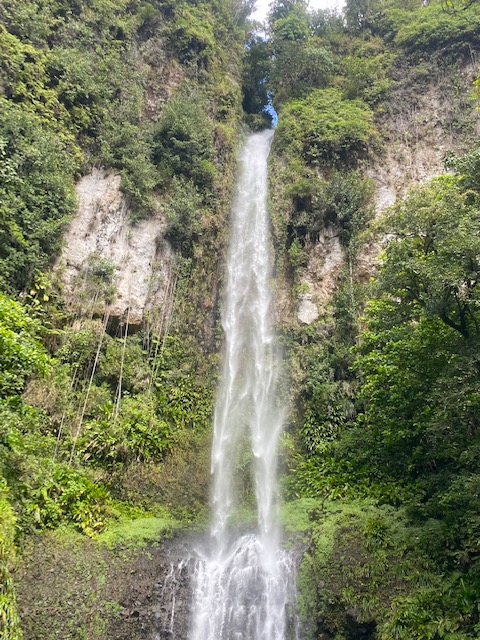
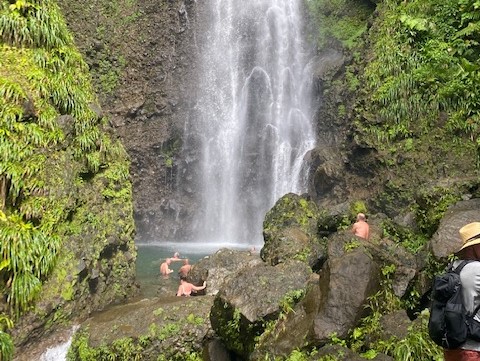
Trafalgar Falls are actually a pair of waterfalls separated by a rocky headland, with the unique feature of a hot spring to one side of the bigger of the two falls. These falls are very easily accessible from a nearby bus stop. I enjoyed the challenge of scrambling over the rocks, with help over the hard bits from Phil and Adrian, to access the hot springs. What absolute luxury! I found my sweet spot where I could sit in a pool with a small warm waterfall from the hot spring massaging my neck and shoulders while the rest of my body stayed refreshingly cool in the water flowing from the waterfall. And even better, we had this whole area to ourselves for about 2 hours.
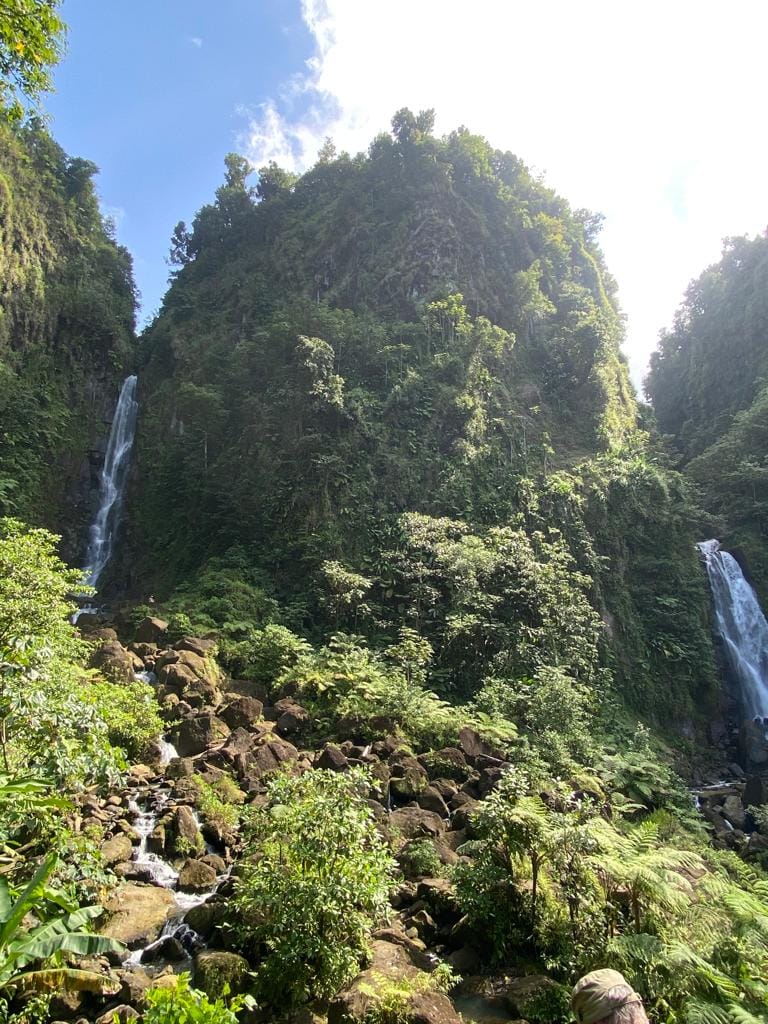
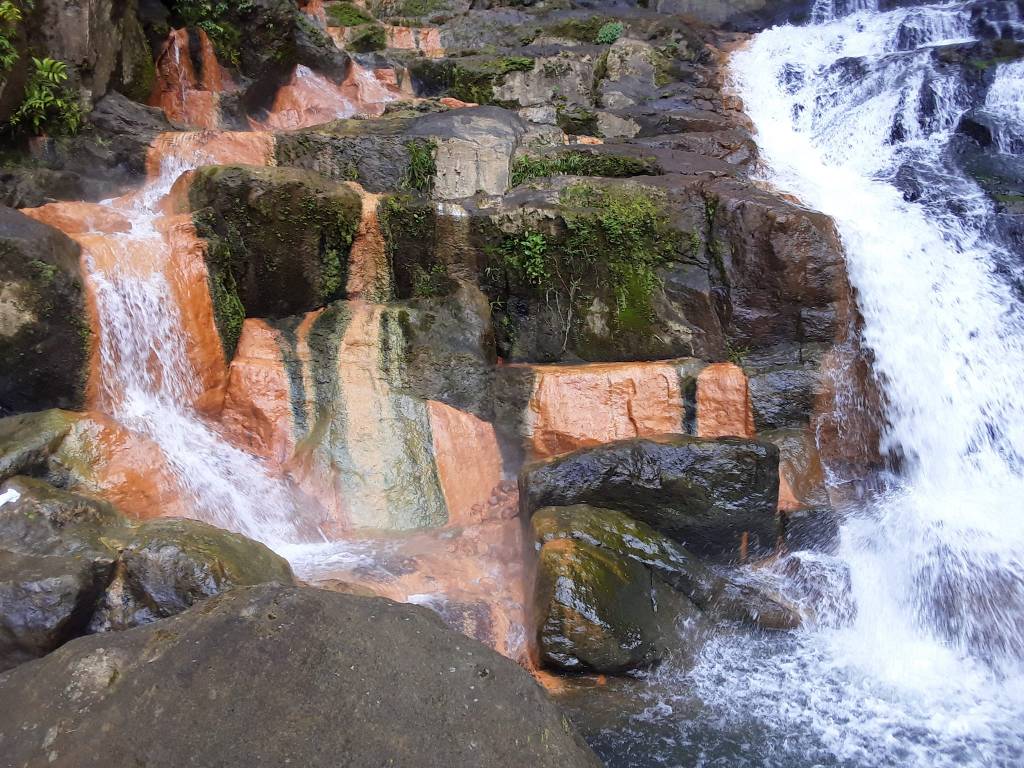
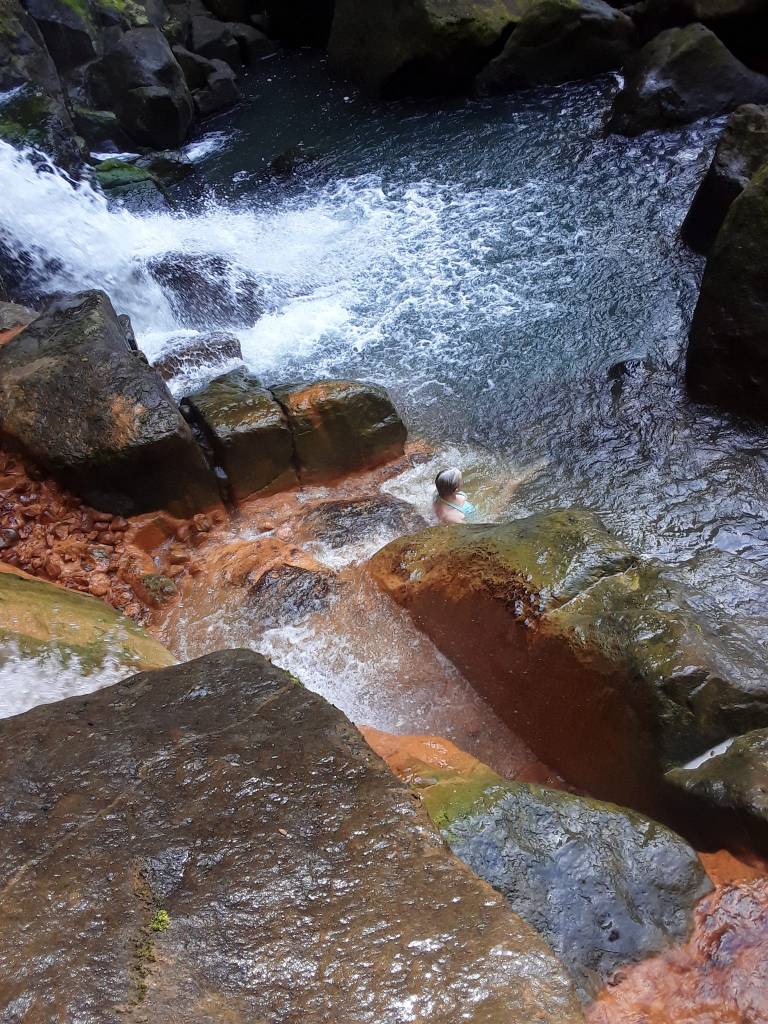
The next day Phil and Adrian, joined by a Swiss couple whom we had met in Capo Verdes, had a much more challenging time getting to the Boiling Lake – a flooded fumerole (or opening) in a still active volcanic area, through which hot gases escape to the surface. It’s the second largest such lake in the world. The trip to the lake holds many challenges. Trekkers are first taken through rainforest by a series of steps and some steep ascending and descending climbs on muddy paths before walking through the Valley of Desolation. This is one landscape on Dominica that is anything but lush. The vegetation in the valley was destroyed by a volcanic eruption which has left a barren landscape dotted with hot springs and streams, bubbling mud, steaming vents, and strange coloured rocks. This was an exciting but dangerous area.
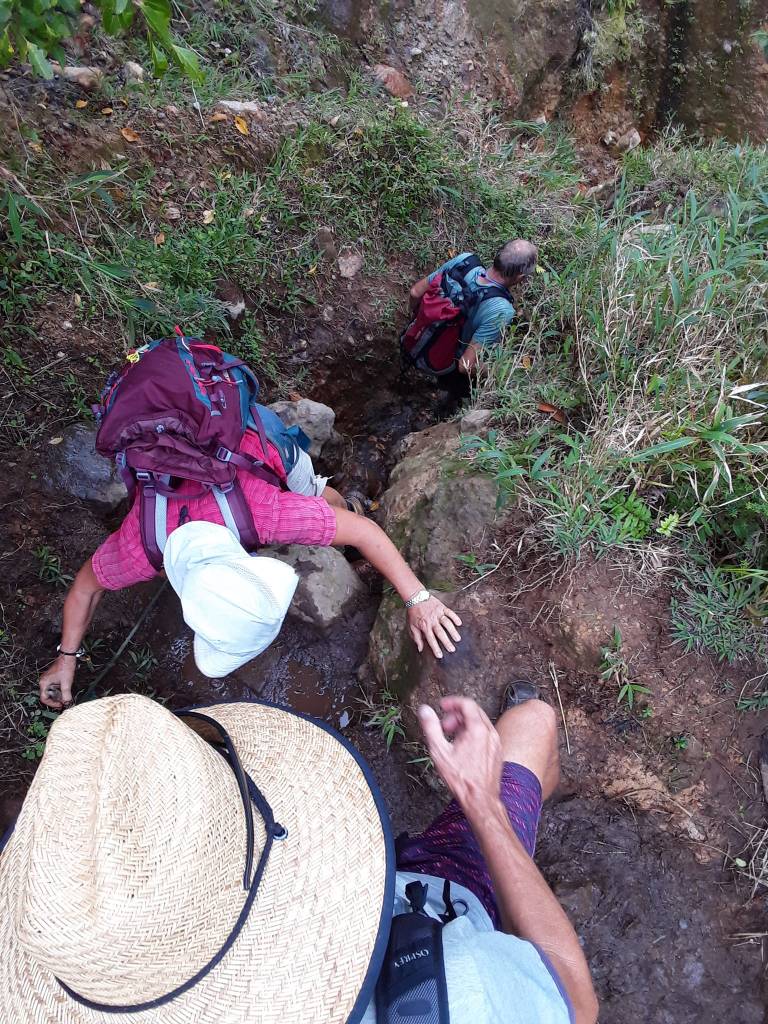
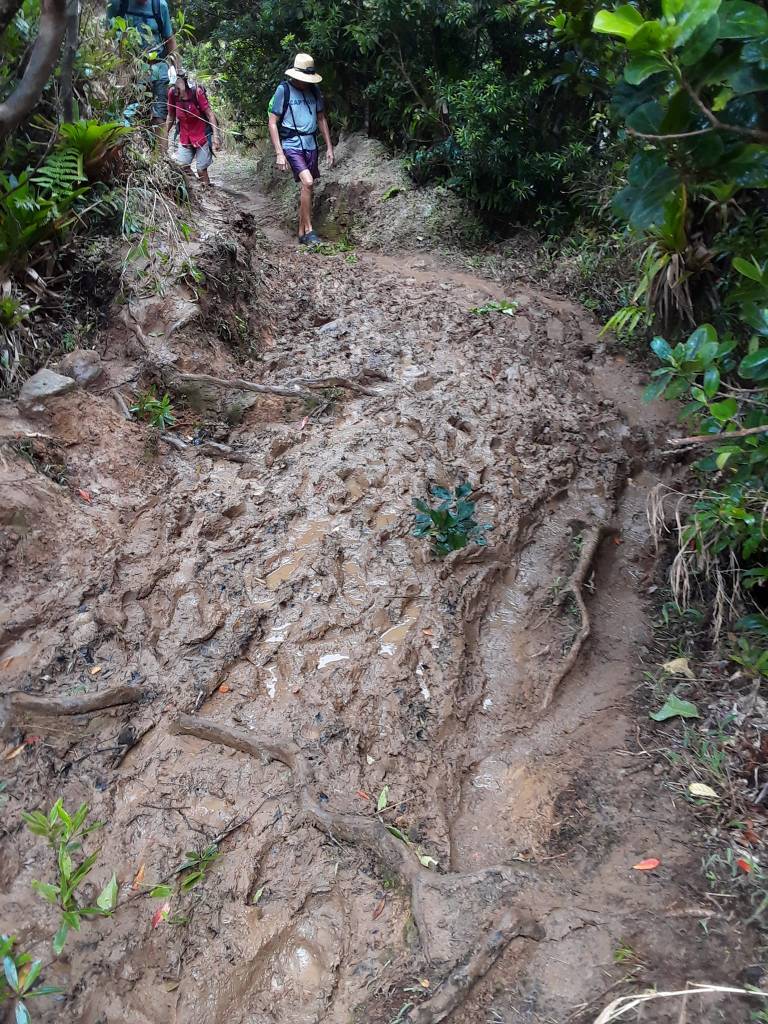

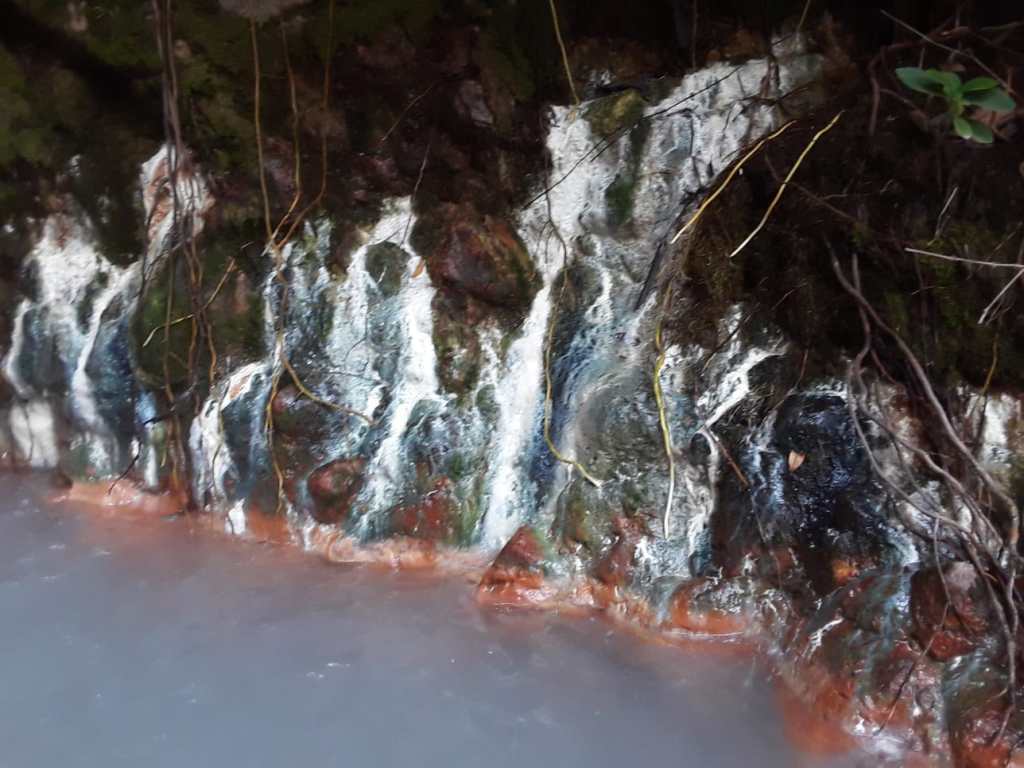
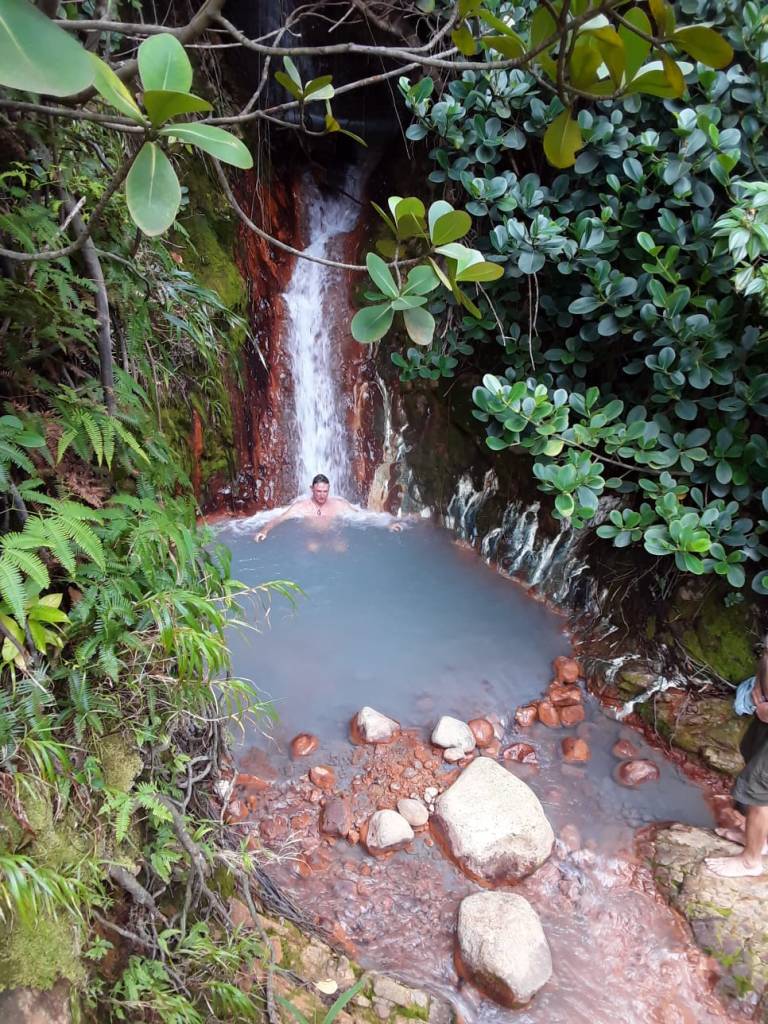
Finally, after three hours of hard yakka, the Boiling Lake appears shrouded in steam which sometimes clears to reveal the bubbling water. If that wasn’t enough, after a lunch break, the three-hour return trip awaits. The exhausted group did manage to find themselves a bar for a beer before returning to the boat.
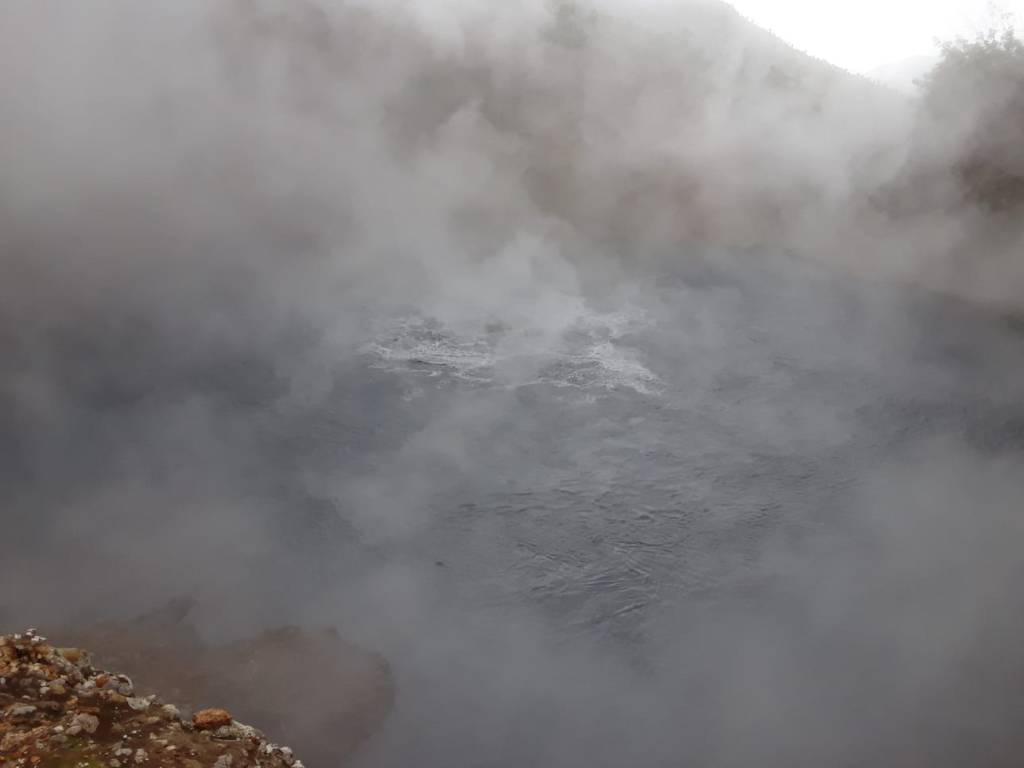
I had a wonderful experience at another of Dominica’s attractions – Titou Gorge. This gorge is actually a lava tube that has split open at the top. It is possible to swim through the Gorge up to a waterfall. A group of three plus their guide had gone in before me, but were already at the falls by the time I got started.
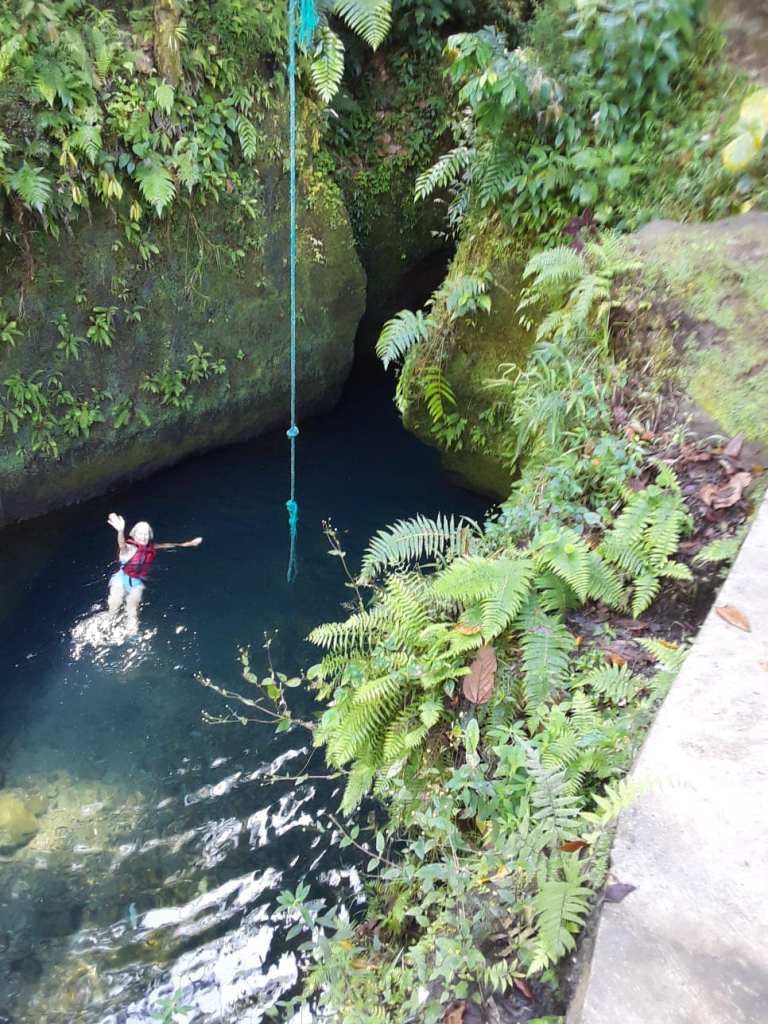
The sides of the gorge were covered with ferns and mosses and it was so peaceful as I swum along, without the voices of others echoing in the canyon. At its narrowest point, I could touch both sides of the gorge.
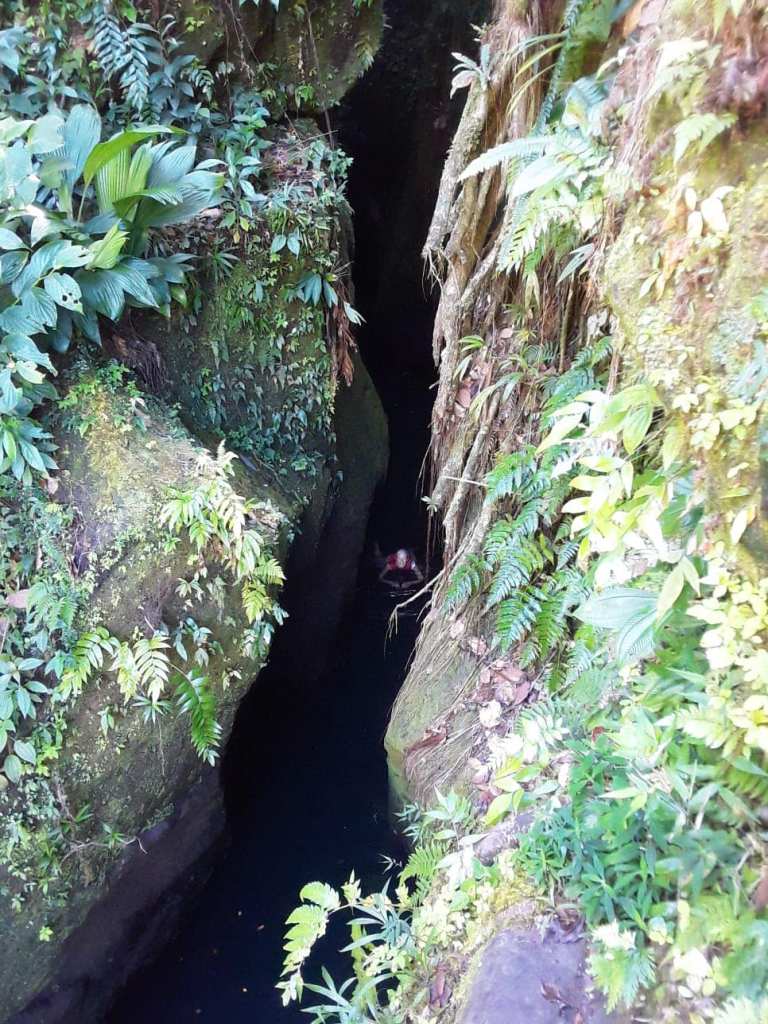
Up above along the edges of the gorge the sunlight filtered down through the trees. The increasing thunder of the waterfall indicated that I was approaching the end of the short swim. There was surprisingly little current as I continued to the pool at the bottom of the relatively short waterfall. The other party were just leaving the pool for their return swim and no-one else was coming behind me, so I was able to revel alone in this natural environment. The water was quite cool, so I didn’t linger too long before I swam back through the gorge, again on my own and taking the time to float on my back to look up at the sky through the slit in the gorge. As I re-emerged into the entrance pool, there was a large group just preparing to enter the water so I couldn’t have timed it better. I felt incredibly lucky to have been able to have an “alone” experience in the gorge.
Having satisfied ourselves at the southern end of Dominica, we moved north to Portsmouth. Seeking to understand more of the history of Dominica and its people, we took a bus trip to the Carib Territory in the north east. The Carib people had migrated northwards from South America to many of the islands of the Caribbean and were the inhabitants of Dominica when the Europeans arrived. There seems to be some confusion both in the on-line material and among the people themselves as to whether the Arawak Indians were already on Dominica when the Caribs arrived. At any rate, the Caribs put up fierce resistance first to the Spanish and later to the French and British. Eventually though Dominica was occupied by the French and the British, and the Carib, like so many indigenous populations around the world, were dispossessed and pushed into the remote north east. They remained isolated and cut off from the rest of Dominica until the 1970’s when a road suitable for motor vehicle traffic was constructed.
Today 3000-4000 Carib people live in the Territory. We chatted to a few of them on the bus and learnt very quickly from one young woman that the label “Carib” is offensive to them as it is derived from a word that is associated with cannibalism. This is something of a misnomer as there is little evidence that cannibalism was widely practiced by these people. The official name for their population now is Kalinago. We also learnt that the Territory land is owned by the community, rather than by individuals. The land can be bequeathed to descendants but cannot be sold, and as individuals do not hold title to the land, it can’t be used as security for loans. While this prevents non-Kalinago from acquiring land in the Territory, it is seen as a discriminatory impediment to economic advancement.
With the help of our Kalinago friend we met on the bus, we found the Cultural Centre and spent about an hour talking to Miranda and Gerard Langlais whose life work has been to preserve Kalinago culture and encourage younger members of the community to learn and understand their heritage. It’s important work as this Kalinago population are, as I understand it, the last descendants of the South American people who widely populated the Caribbean islands. The Kalinago were either killed or driven off the other islands by the colonising powers. It’s always fraught to judge the past through the eyes of the present, but I can’t help thinking that the colonial powers the world over were such bullies, charging in and dispossessing the indigenous people of their land and often their lives. On the other hand, there have always been tribal skirmishes over land – it wasn’t just the colonial powers that were pushing people around.
Here at Portsmouth we enjoyed a tour up Indian River with a local guide, Titus. Once he got us started, he turned off the engine of his boat, and his offsider rowed us up the river allowing us to enjoy its twists and turns under the shady trees and to spot some of the wildlife – iguana in the trees, schools of fish around us, humming birds flitting among the flowers, and many crabs hiding along the banks and in the roots of the swamp bloodwood trees.
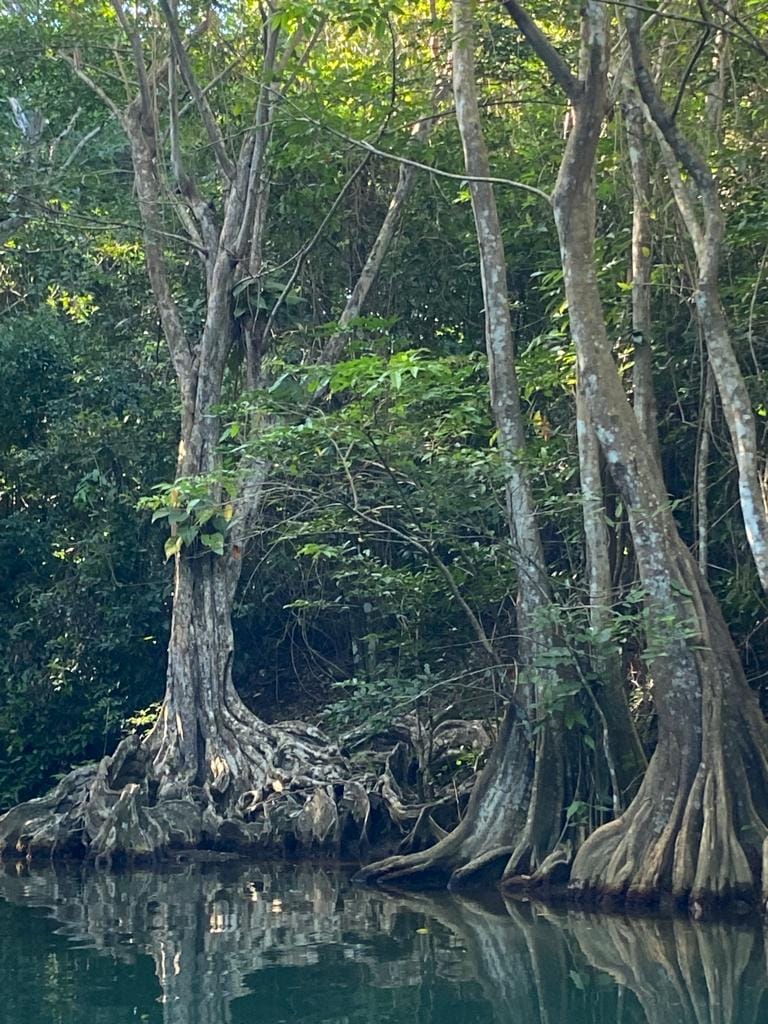

As “Pirates of the Caribbean” fans, we were happy to see the shack belonging to Tia Dalma, the voodoo practitioner who appears in “Dead Man’s Chest” and “At World’s End”. In the former movie, Jack Sparrow travels up Indian River to visit Tia Dalma in her shack to ask for her help.
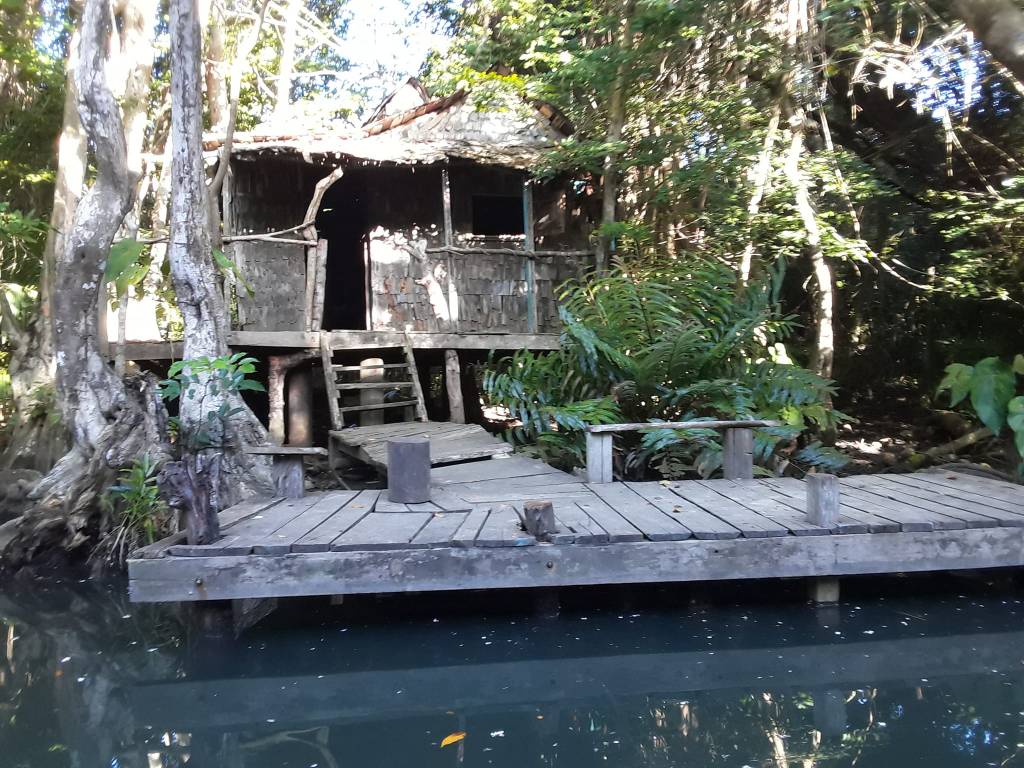
At the end of the boat ride, we disembarked and then walked back through a path in the forest, then some farmland and finally to the outskirts of town. Titus picked samples of herbs for us along the way – lemon grass, bay leaves, thyme, and an unnamed one for headache relief.
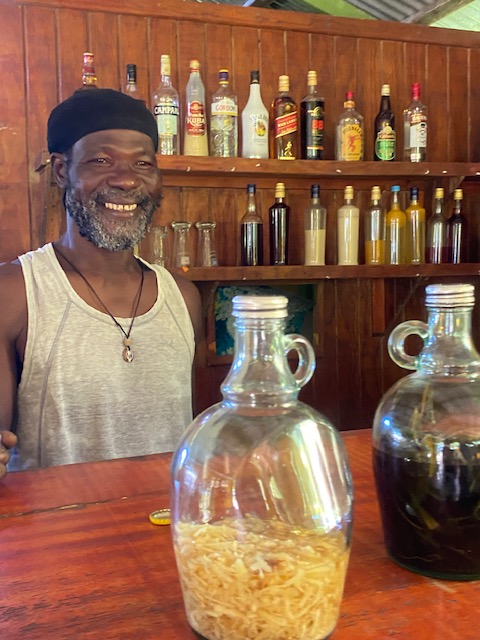
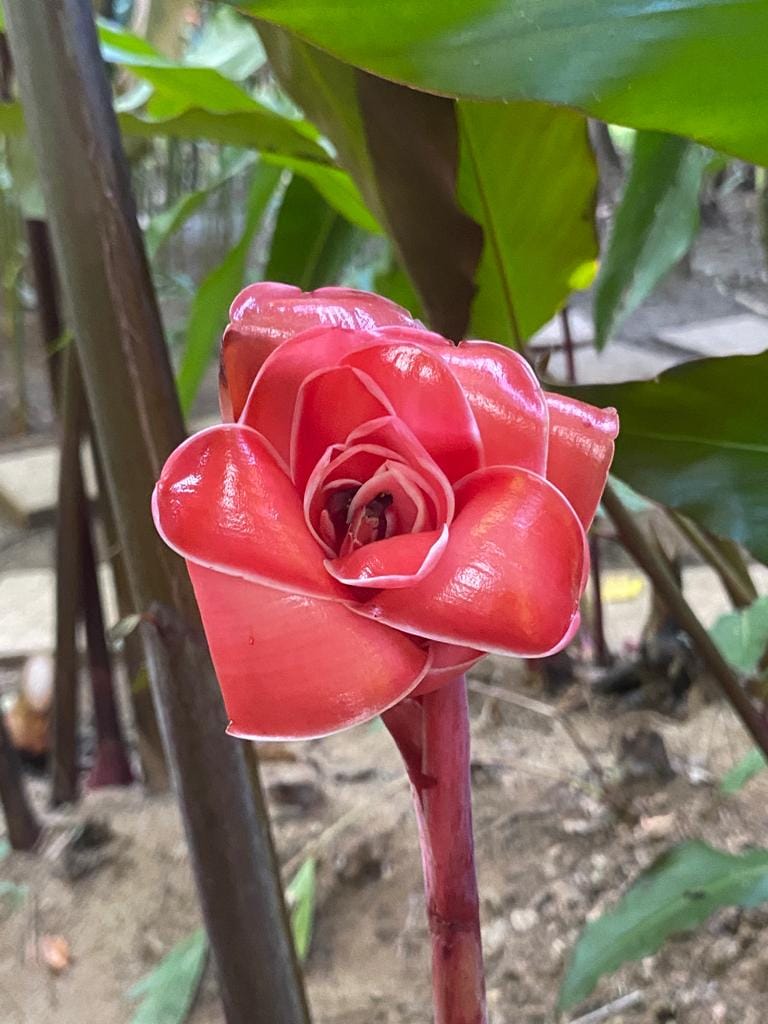
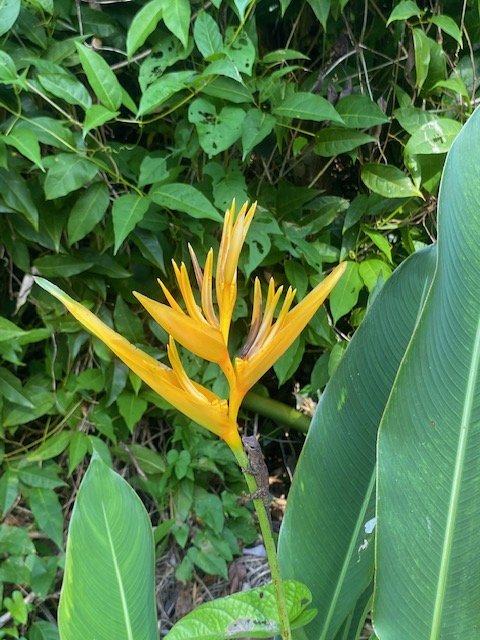
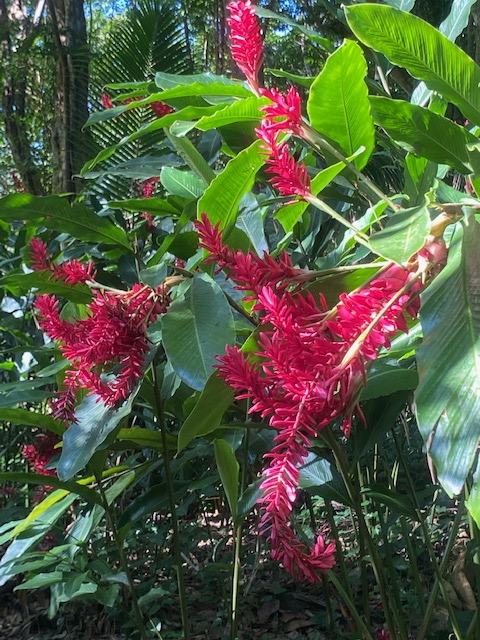
Now that we have spent some time in the Caribbean, and read a bit of the history, it’s easy to imagine the French and English ships sailing all over the place, fighting with each other over the various islands, with pirates thrown in to make it even more “interesting”.
